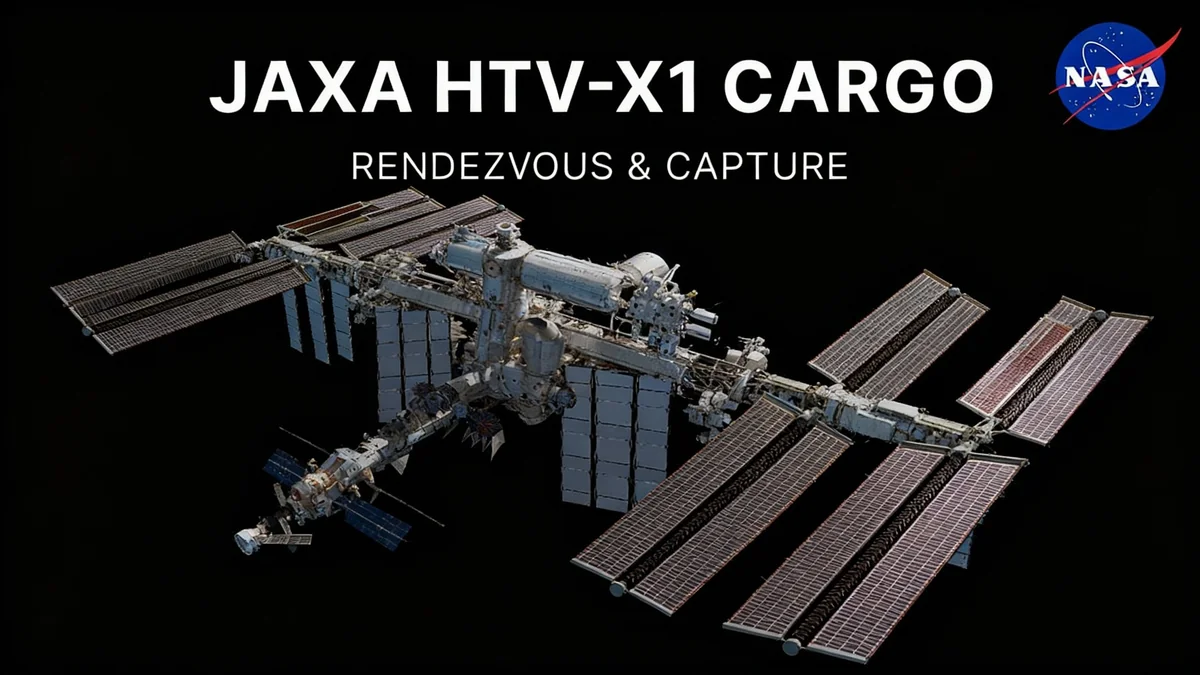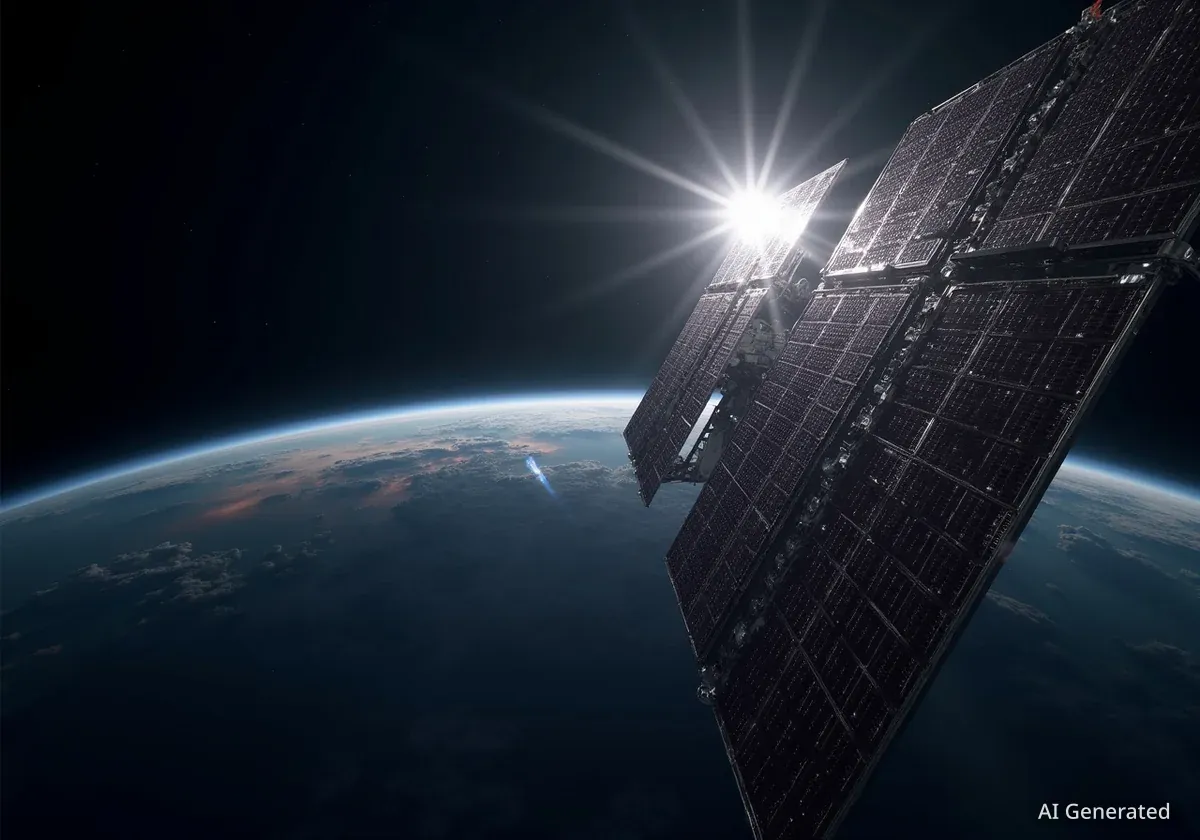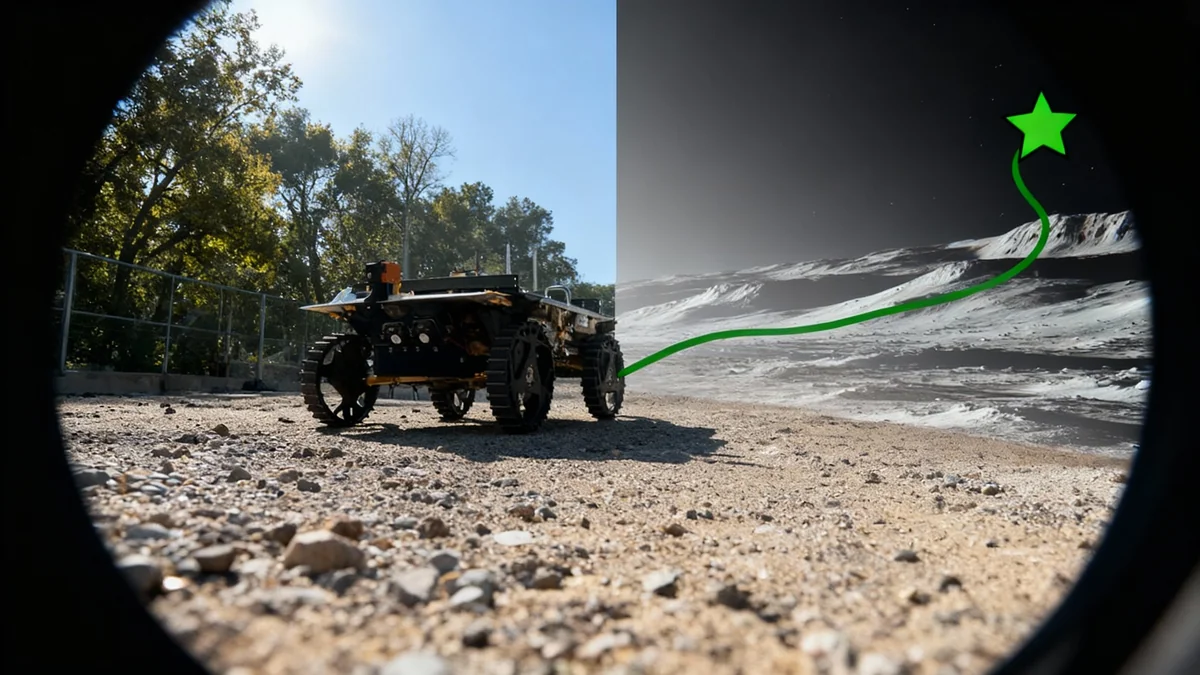Japan's next-generation cargo spacecraft, the HTV-X, has successfully reached the International Space Station (ISS) for the first time. The uncrewed vehicle is delivering over 4,000 kilograms of essential supplies, food, and equipment to the orbiting laboratory, marking a significant milestone for Japan's space program.
The robotic freighter was captured by the station's Canadarm2 robotic arm earlier today, operated by NASA astronaut Zena Cardman and Japan Aerospace Exploration Agency (JAXA) astronaut Kimiya Yui. The successful rendezvous and capture initiates the start of the HTV-X's operational service to the ISS.
Key Takeaways
- Japan's new HTV-X cargo vehicle completed its inaugural journey to the International Space Station.
- The spacecraft delivered approximately 9,000 pounds (4,080 kg) of supplies and experiments.
- It is the successor to the highly reliable H-II Transfer Vehicle (HTV), which flew nine successful missions.
- A key new feature allows the HTV-X to remain in orbit for up to 1.5 years after departing the ISS, serving as a platform for experiments.
A Successful Arrival
The HTV-X spacecraft approached the ISS on a carefully planned trajectory before stationing itself within reach of the Canadarm2. The capture occurred at approximately 11:50 a.m. EDT, with live coverage of the event broadcast by NASA.
Astronauts Cardman and Yui, working from inside the station's Cupola observatory, skillfully maneuvered the 17.5-meter robotic arm to grapple the free-flying vehicle. Following the successful capture, ground controllers will take over to guide the spacecraft to its berthing port on the station's Harmony module.
The Next Generation of Logistics
The HTV-X represents a significant evolution from its predecessor, the H-II Transfer Vehicle, known as Kounotori or "White Stork." The Kounotori program established a perfect record, successfully completing all nine of its resupply missions between 2009 and 2020.
Built by Mitsubishi Heavy Industries for JAXA, the new freighter maintains a similar payload capacity, capable of carrying up to 13,200 pounds (6,000 kilograms) of cargo to low Earth orbit. This first mission, designated HTV-X1, launched on October 25th aboard Japan's new H3 rocket.
Mission Payload
On its first flight, the HTV-X is carrying approximately 9,000 pounds (4,080 kg) of pressurized and unpressurized cargo, including fresh food for the crew, scientific experiments, and station hardware.
Enhanced On-Orbit Capabilities
While the HTV-X is an expendable vehicle designed to burn up on reentry like its predecessor, it introduces a crucial new capability. The spacecraft can remain in space for an extended period after it undocks from the ISS.
This feature transforms the vehicle from a simple delivery truck into a temporary orbital platform. According to its manufacturer, the HTV-X can provide opportunities for on-orbit demonstrations and experiments for up to 1.5 years after leaving the station.
"HTV-X enhances transportation capabilities and adds the capability to provide various users with on-orbit demonstration opportunities for up to 1.5 years after leaving ISS until reentry," Mitsubishi Heavy Industries stated in a description of the vehicle.
This extended mission profile allows companies and research institutions to test new technologies in a space environment without taking up valuable time or space on the ISS itself. It marks a strategic enhancement to the logistics and research infrastructure in low Earth orbit.
The International Supply Fleet
The HTV-X joins a small but vital group of international cargo vehicles that keep the International Space Station supplied and operational. The current fleet includes:
- Russia's Progress: An expendable cargo craft that has been servicing space stations for decades.
- Northrop Grumman's Cygnus: An American expendable vehicle.
- SpaceX's Dragon: The only current resupply craft capable of returning significant amounts of cargo and scientific experiments back to Earth for analysis.
A Critical Link in the Chain
The successful inauguration of the HTV-X ensures the continuity of Japan's critical role in the ISS partnership. With a reliable new vehicle, JAXA continues its commitment to supporting the long-term operations and scientific research conducted aboard the orbiting laboratory.
The arrival of HTV-X1 not only replenishes the station's supplies but also validates the performance of a new generation of technology. As the ISS program moves forward, the enhanced capabilities of vehicles like the HTV-X will be essential for maximizing scientific returns and supporting the human presence in space.





